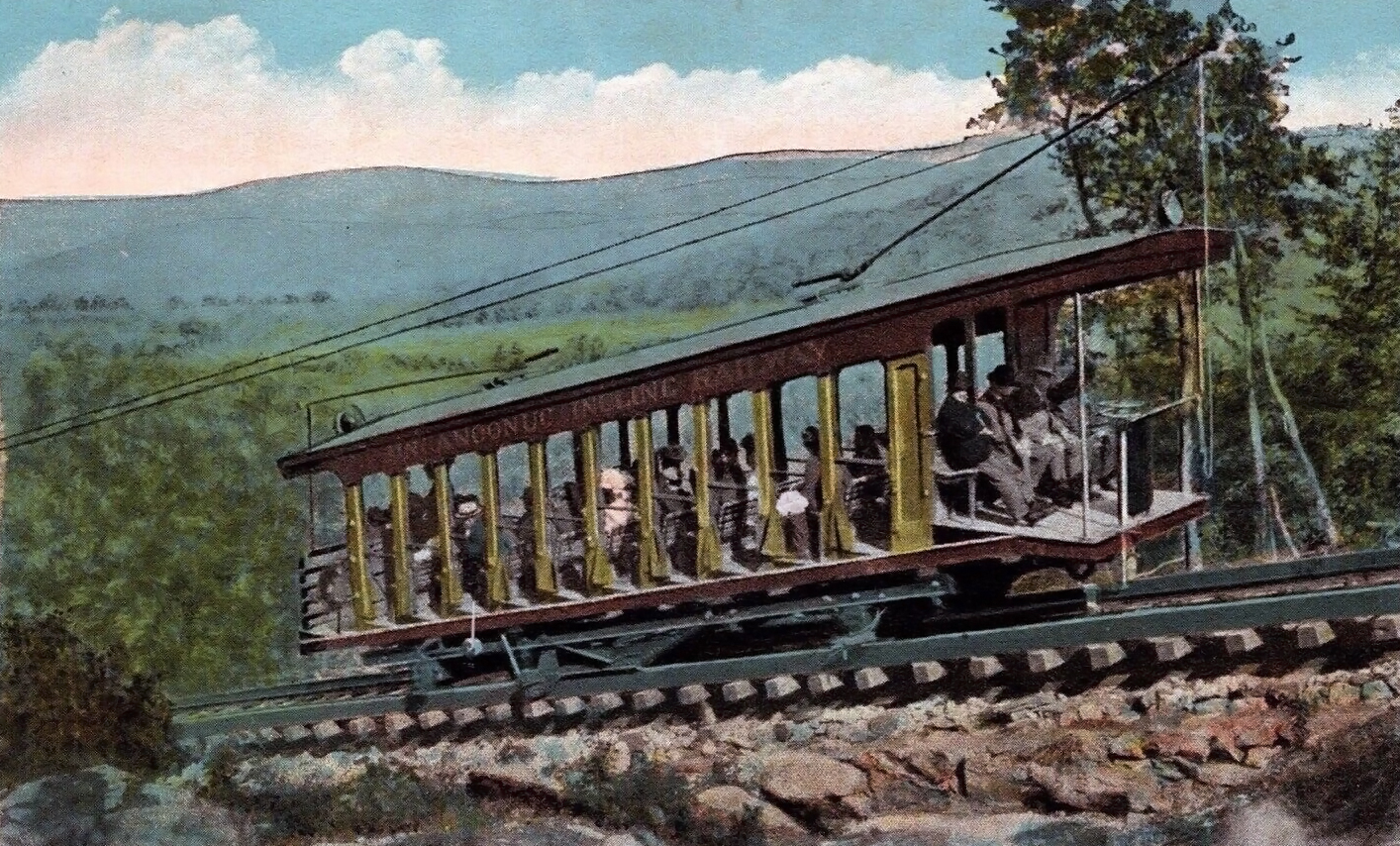New Hampshire Interurbans and Streetcars: History, Lines, Photos
Last revised: September 10, 2024
By: Adam Burns
Like most of New England, New Hampshire contained little actual interurban mileage as nearly all of its electrified systems were local streetcar operations serving individual cities and towns. Many of these are listed below.
Most of the state's network had been abandoned by 1930 and were already in decline prior to the Great Depression.
 A postcard of the Uncanoonuc Incline Railway which climbed Uncanoonuc Mountain in Goffstown, New Hampshire.
A postcard of the Uncanoonuc Incline Railway which climbed Uncanoonuc Mountain in Goffstown, New Hampshire.Berlin Street Railway
The Berlin Street Railway, as its name implies served the City of Berlin. It began operations in 1898 and operated streetcars until 1938 when the service was discontinued.
Claremont Railway
The Claremont Railway served the City of Claremont and operated streetcars until 1932. However, the railroad also provided freight services, which continue on to this day.
During its electrified years the Claremont Railway used electric motors but it has long since scrapped these in favor of diesel locomotives.
Exeter, Hampton & Amesbury Street Railway
The Exeter, Hampton & Amesbury Street Railway took over the operations of the Exeter Street Railway in 1899, a system that was incorporated just two years prior in 1897.
It operated under a number of different owners (New Hampshire Traction Company, New Hampshire Electric Railways and the Exeter Railway & Lighting Company) during the company's existence but always retained its original name. Streetcar service lasted until 1924 when it was discontinued.
Laconia Street Railway
The Laconia Street Railway served the City of Laconia. It began operations in 1882 and provided streetcar service until 1926 when it was discontinued.
Manchester Street Railway
The Manchester Street Railway served the cities of Manchester and Nashua. It began operations in 1899 taking over the property of the Manchester Horse Railroad, which had its roots dating back to 1871.
It remained the Manchester Street Railway until 1925 when it became known as the Manchester Traction Light & Power Company, and then a year later was purchased by the Public Service Company of New Hampshire. Streetcar service lasted until 1940 when it was discontinued in favor of buses.
Nashua Street Railway
The Nashua Street Railway served the City of Nashua. It was the only interurban railroad to serve the town and began operations in 1886, providing passenger service until 1932 when it was abandoned.
Uncanoonuc Incline Railway
The Uncanoonuc Incline Railway was a unique interurban railroad operation.
It began operations in June of 1907 operating from a connection with the Manchester Street Railway at Shirley Junction to a station based at the bottom of the bottom of a nearby mountain.
From there it operated an incline railway to the Uncanoonuc Hotel, which provided a spectacular view into the surrounding states of Maine, Vermont and Massachusetts (not to mention the Atlantic Ocean itself). The railway operated into the 1940s when it was finally abandoned.
Other Systems
Berlin-Gorham Street Railway
Concord Electric Railway
Recent Articles
-
Minnesota - Murder Mystery - Dinner Train Rides
Dec 27, 25 03:50 PM
Murder mystery dinner trains offer an enticing blend of suspense, culinary delight, and perpetual motion, where passengers become both detectives and dining companions on an unforgettable journey. -
Georgia - Murder Mystery - Dinner Train Rides
Dec 27, 25 03:35 PM
In the heart of the Peach State, a unique form of entertainment combines the thrill of a murder mystery with the charm of a historic train ride. -
New Jersey - Wine Tasting - Train Rides
Dec 27, 25 09:57 AM
If you're seeking a unique outing or a memorable way to celebrate a special occasion, wine tasting train rides in New Jersey offer an experience unlike any other.



